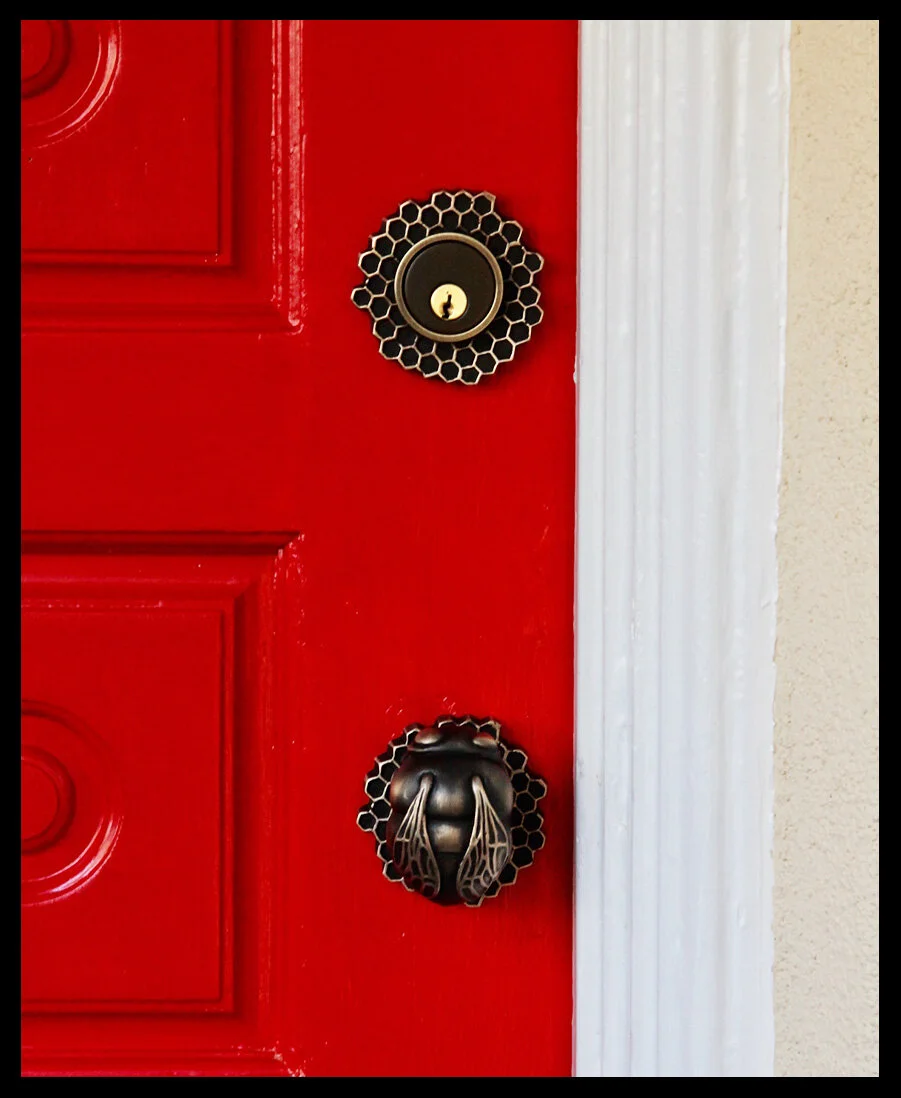Choosing the right doorknob for our new insect paneled entry door was not a difficult task as we have 4 styles of animal and reptile to choose from. The carnivorous lizard would have been an obvious choice but as he occupies center stage on our entry gate, we decided to opt for the bumble bee knob.
The bumble bee is cast in bronze and we finished this set with a dark oil rubbed patina which plays well with both the red and black colors of our entry door. To accentuate the bees round abdomen and eyes and to highlight the ridges on the honeycomb back plate we lightened these sections for contrast.
The honeycomb back-plate can function as both an escutcheon for the bee knob or as trim that can be used to house a keyed cylinder. The bee knob when turned activates a latch that opens the door and when released keeps the door closed. The honeycomb is machined to take a spindle that passes through the port of the latch to activate the latch and to keep the knobs firmly attached to each other.
The honey comb for the keyed cylinder is machined on the outside with a large 1 3/8” hole to house the keyed cylinder and on the inside with a small ½” to house the turn piece that enables the door to be locked or unlocked from the inside. If you study the photo of the inside trim you will notice that the turn piece is styled on a small cockchafer beetle.
Our entry door took several weeks to create and our posts document how the panels were created so if you want to turn one of your doors into a gallery of bird, animal or flower paintings then please do read our earlier posts of japanning and gold leafing. Needless to say there is no limit to the subject matter for decorative panels, so harness your imagination and create something fabulous.
Japanned Gold Leaf Panels with Bumble Bee Knob




